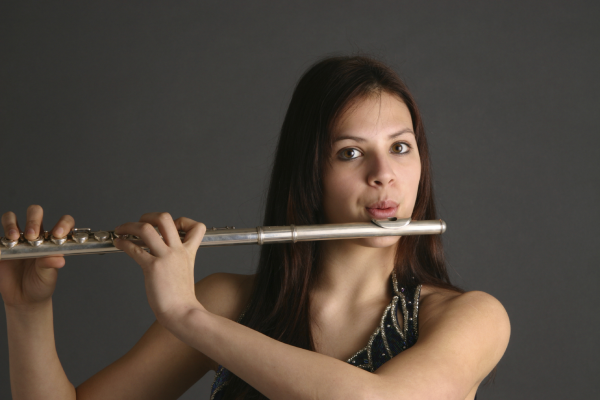Dynamics. We all know the markings: pp, p, mp, mf, f, ff. As young musicians we are taught that pp means to play at the softest level while ff means to play at the loudest, along with all the levels in between. It wasn’t until I was into my late 20’s that I realized, most of the time, dynamic markings had very little to do with volume.
Whether you’re a wind player in a band or a string player in an orchestra, you know when you see the back of a conductor’s hand it means to give more volume and when you see a conductor’s palm it means to give less volume. I know brass players affectionately refer to the latter as “the hand”. As a clarinetist, I performed in a band every year from 4th grade all the way through the second year of my masters. The clarinet section is normally the largest section in a band. Balancing and blending with the section is extremely important, especially when playing in the high register. After years of being told by my band directors to exaggerate the dynamics (make the piano’s softer and the forte’s louder), I adopted a very rigid mindset when it came to dynamic markings.
orchestra, you know when you see the back of a conductor’s hand it means to give more volume and when you see a conductor’s palm it means to give less volume. I know brass players affectionately refer to the latter as “the hand”. As a clarinetist, I performed in a band every year from 4th grade all the way through the second year of my masters. The clarinet section is normally the largest section in a band. Balancing and blending with the section is extremely important, especially when playing in the high register. After years of being told by my band directors to exaggerate the dynamics (make the piano’s softer and the forte’s louder), I adopted a very rigid mindset when it came to dynamic markings.
When playing a solo such as a sonata or concerto, a chamber work, or even a solo in a large ensemble, you must look at dynamic markings in a different light. When confronted with any dynamic marking, consider how you are playing the notes, instead of how loud you are playing them. Younger musicians often struggle with piano. I coach my students to refrain from looking at a piano marking as a restriction or ceiling on their interpretation. You can do anything in piano that you can do in forte as long as it’s done with a “piano quality”. Here are some things to think about when playing piano other than playing soft:
- Consider the manner in which you attack a note. Create a more gentle start to the sound.
- How is the note released? Be more attentive to how you taper and release the sound.
- Check your fingering. As clarinetists we drop our fingers onto the open tone holes of the instrument. One of my teachers came up with the phrase “forte fingers.” In forte passages we use forte fingers which means we can be more aggressive with our fingering technique. In piano passages we have to be much more careful and attentive to how we drop our fingers. I make sure all of my students understand how a delicate finger drop can go a long way towards creating a piano quality much more than just playing softly can.
- Piano does not mean boring. Attention to the direction and curvature of the phrasing is just as important in piano as it is in forte.
- Imagine you’re playing forte. A conductor of mine once told me, “Whenever you play piano, think forte.” This was great advice. Sometimes when confronted with a piano marking we tend to shrink back in our chair, shut down our air support or play with timidity. Steps 1-4 are more easily controlled when playing with the intensity one often uses in forte.
Band directors often chastise soloists in their bands with the quip, “A solo does not mean to play so low it can‘t be heard.” Younger musicians often play too softly during solos marked piano. This is completely understandable considering most of the time students are told to blend and balance their tone and volume with the rest of their section. If students are taught early in their instruction that solo dynamics are entirely different than ensemble dynamics, it will go a long way towards their advancement as confident performers.
I’ve arrived at the point where I no longer have a fixed response to dynamic markings. Every piece of music is different. Forte in one piece can sound completely different than forte in another. I challenge myself to experiment with the various qualities that dynamic markings imply aside from volume. When you next encounter a “p” or an “f” in a piece, I encourage you stop thinking of how loud you are playing and instead start thinking of how are you are playing.
By Joe Pinto, Clarinet Instructor at Hunterdon Academy of the Arts


COMMENTS